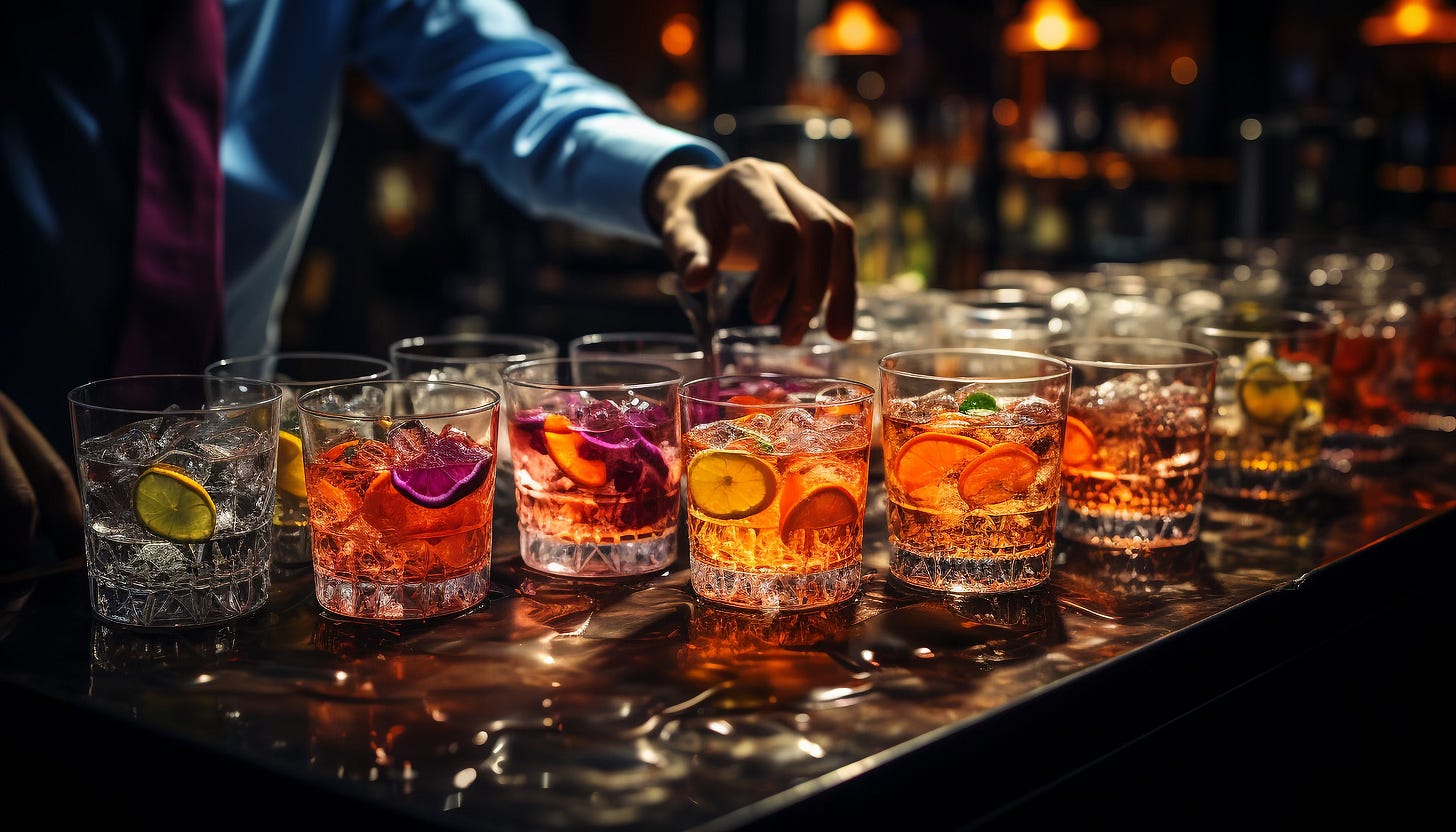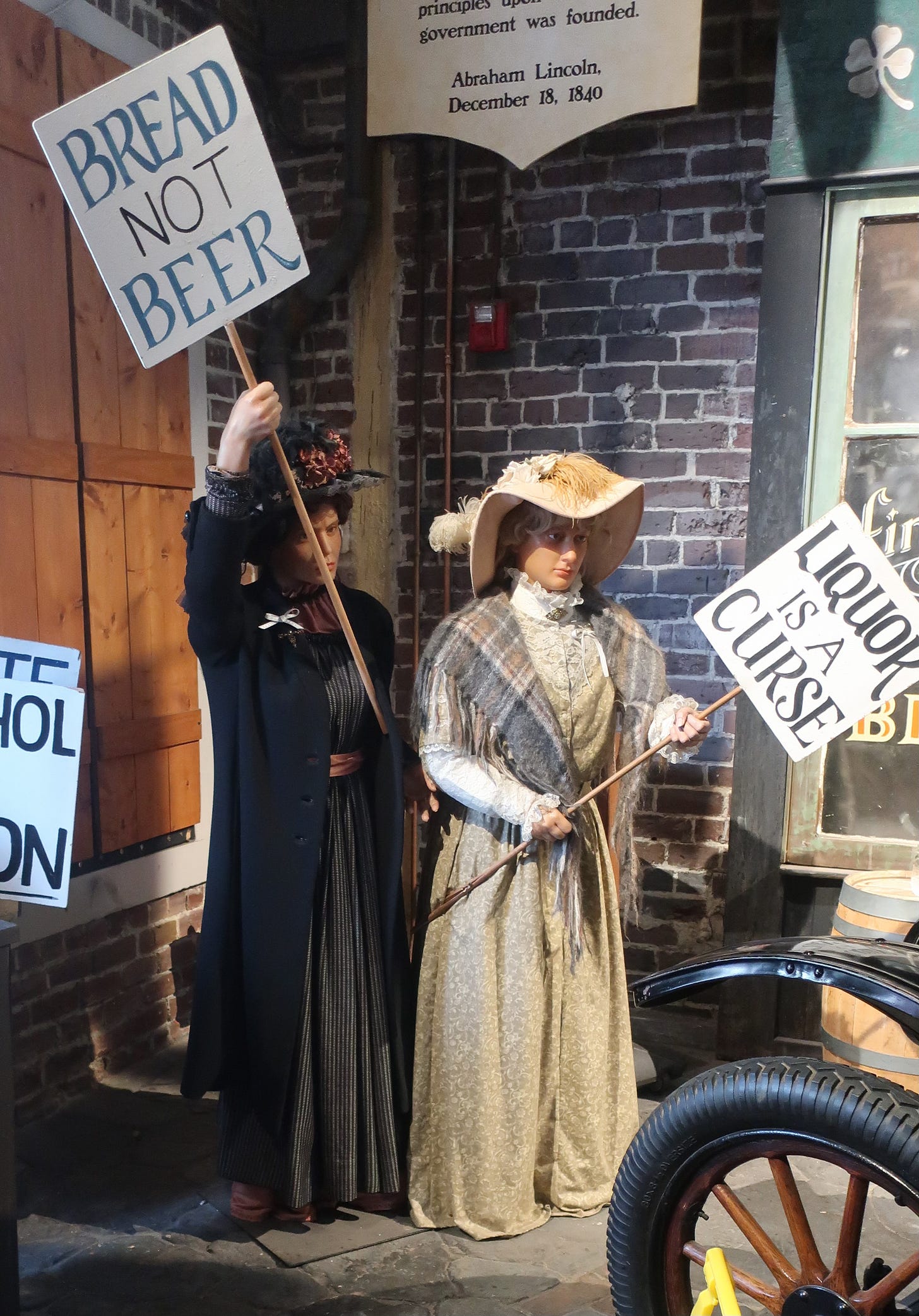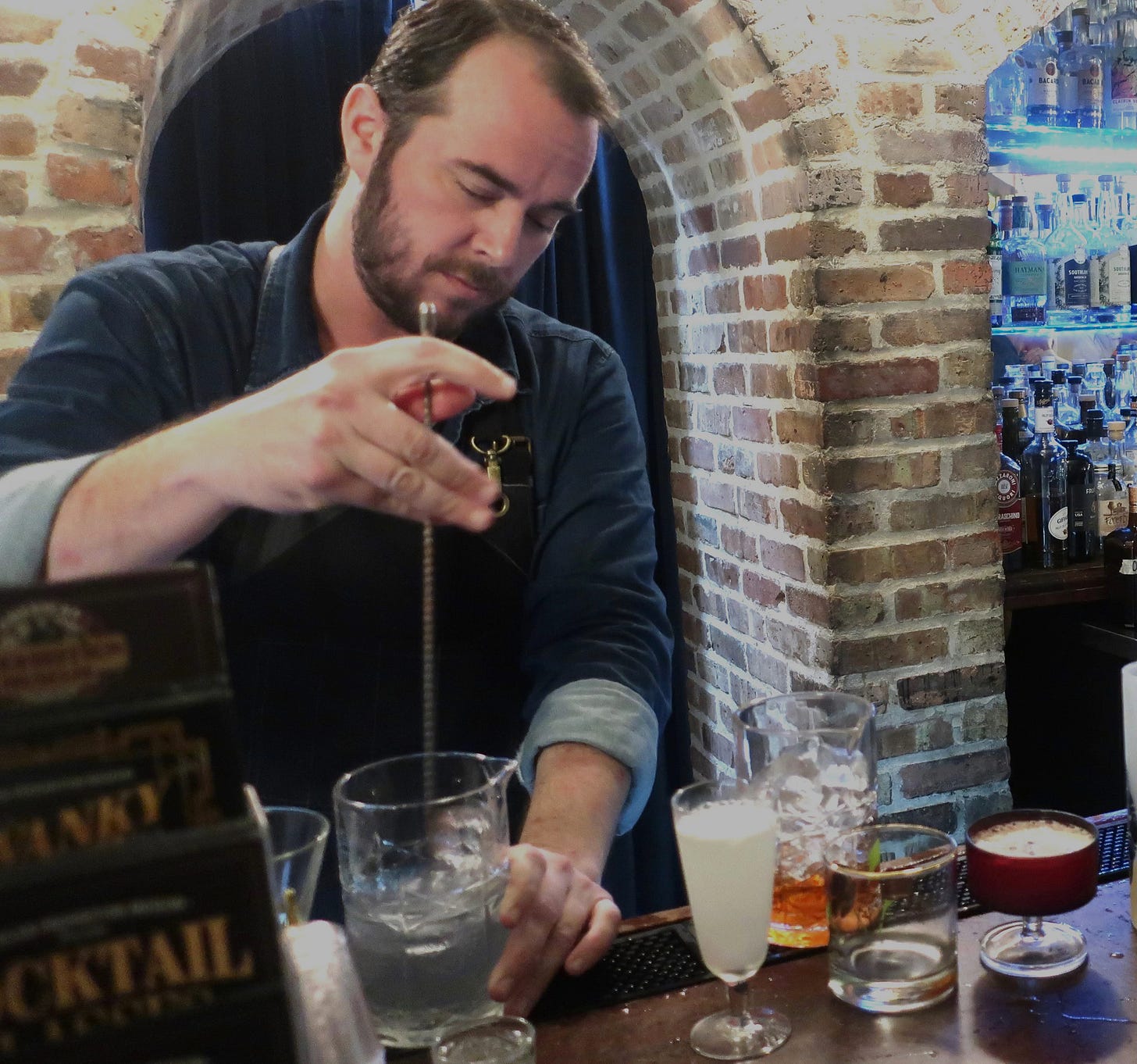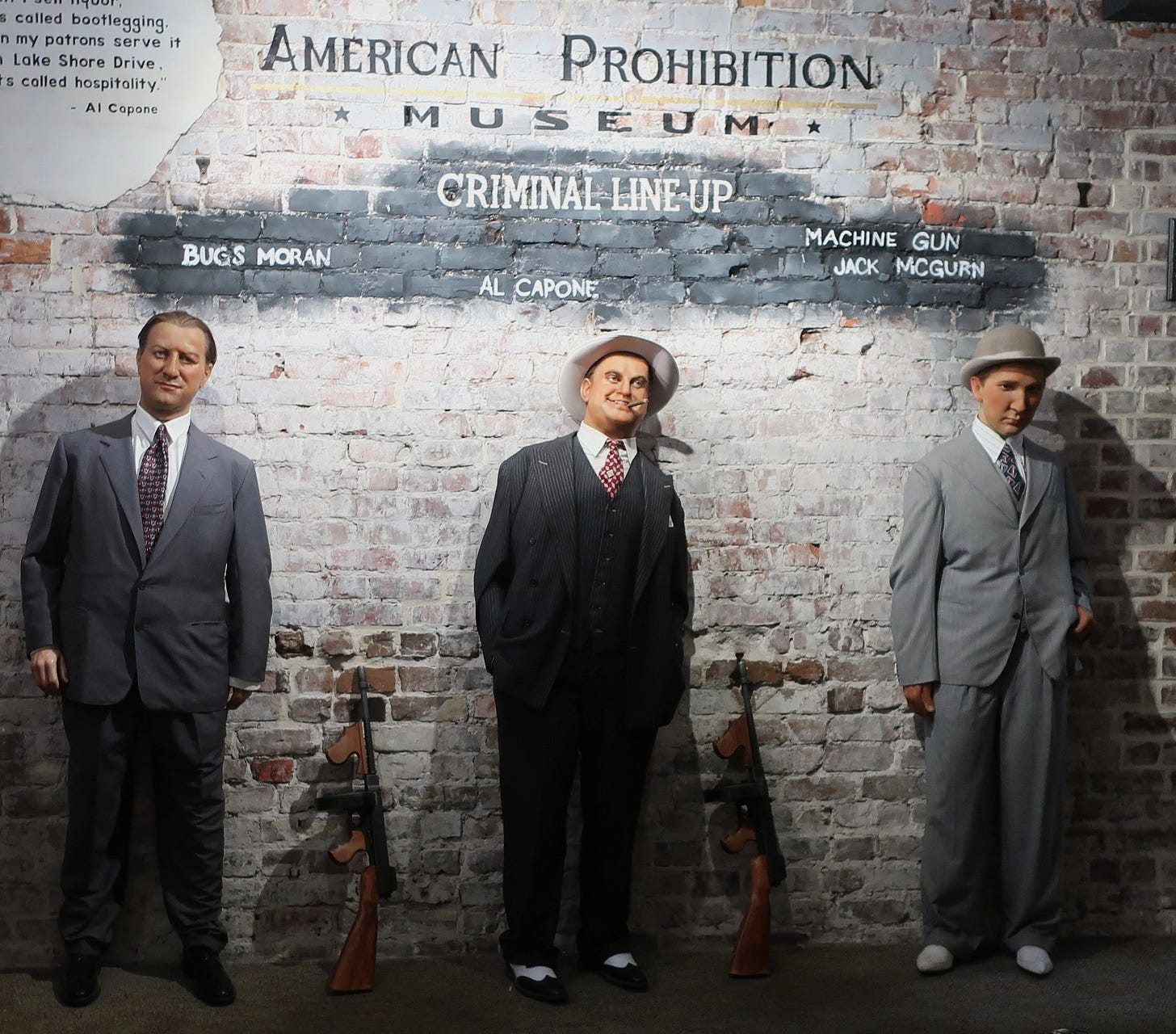Recaptured lore and lure of the clandestine Speakeasy can be found nationwide.
These establishments recapture the Roaring Twenties hidden behind secret doors and bookcases.
The Little Rascals was a series of movie shorts that ran from 1922 to 1938, then was repackaged as a television show. When a casual eatery named Spanky’s, which echoed the “speakeasy” days of Prohibition (1920-1933), opened in Naples, Florida in 1984, “Spanky” McFarland – one of the Little Rascals -- sued for unapproved use of his name.
After the suit was settled, the restaurant/drinking establishment was able to keep its monicker and it continues to this day to serve casual food and adult beverages, offered in water glasses to recall Prohibition practices. The walls are plastered with vintage photographs, one table offers seating in old barber chairs and the salad bar occupies a 1924 Model T truck. (For more information log onto spankysspeakeasy.com.)
Spanky’s is one of a number of modern-day “speakeasies” that recapture the lore, and lure, of clandestine drinking establishments that proliferated during the “Roaring Twenties.” These hidden locations were nestled behind secret doors, bookcases and other facades known to patrons but not to lawmen, and they often required a password to gain entrance. Customers were cautioned to “speak easy,” or quietly, when discussing the illicit drinking establishments so as not to alert officials about their location.
In recent years, there has been a mini-explosion of wannabe speakeasies that seek to replicate the allure and ambience of their forebears. These are watering holes across the country where customers may relive and recapture this colorful, in ways controversial, chapter of the nation’s past.
The Prohibition lives on at this museum in Savannah, Georgia
Like Spanky’s, the bar at the Prohibition Museum in Savannah, Georgia, the only institution of its kind in the country, serves up libations similar to those that were popular a century ago. Fancy cocktails then were created by bartenders to mask the bad taste of poor-quality alcohol which often was laced with questionable additives.
This saloon is hidden behind a nondescript door and a discrete knock prompts a small slit to open, a pair of menacing eyes to peer out and a deep voice to inquire, “Who sent you.” Once inside, you’re immersed in a scene that brings to life visions of long ago. (americanprohibitionmuseum.com)
Capital cities that are speakeasy havens
Some cities have become virtual Meccas for speakeasy-type bars, and the Nation’s Capital ranks high on that list. A tiny bar and larger lounge at Manifest hide behind an old-fashioned barbershop, boutique and coffee bar. Those interested in dropping by the mysteriously named OKPB pub look for a plain door decorated with the painting of a radio antenna and push the bell beside it. (washington.org)
Another capital city, Raleigh, North Carolina also is home to a proliferation of speakeasy-type enterprises which are off the beaten path. Entrance into the cozy Green Light is through an ersatz bookcase leading to what in the past was an architect’s office. The cavernous Foundation saloon not far away is named for the original stone and brick footing which supports the old building whose basement it occupies. (visitraleigh.com)
A similar subterranean source for sipping is the Vault & Vator, tucked away in the cellar of a former Dr. Pepper Cola Company plant in Greenville, South Carolina. The space includes the original vault and lift, which accounts for its name. (vaultandvator.com)
The Alley Cat Lounge in Savannah, Georgia is another basement bar. As its website instructs those seeking it, “If you make it to the front of the building, we are underneath your feet in the basement.” (alleycatsavannah.com).
The edifice in which Reid’s Apothecary in Brunswick, Georgia is located served as a hospital during World War I. Rather than medical care and medications it now offers customers food and drink. The Study, its Prohibition-themed bar, is hidden in a back room accessible through a sliding bookshelf. (reidsapothecary.com)
If this short list leads you to think that speakeasy replicas are limited to the southeastern states, think again. Nostalgia fans from coast to coast have opportunities to recapture and relive this footnote from history.
Speakeasies span the country from coast to coast
New York City being what it is, its nod in this direction can be a bit more upscale than elsewhere. When I entered the Osamil restaurant, the décor belied – in a positive way – its self-identification as a gastropub. While the menu offers Korean specialties like pork belly, squid and octopus, it also includes such familiar fare as lamb chops and prime beef.
Diners on the ground floor may be unaware that a modest unmarked door leads up a somewhat dingy metal stairway to an intimate living room-like venue that offers dramatic views of the surrounding Manhattan skyline and a choice of colorful cocktail concoctions. (osamil.com)
The vibe is very different at Bourbon & Branch, a San Francisco icon which occupies the site where a bar has been since 1867. During Prohibition, a speakeasy operated at the site illegally under the guise of a cigar shop.
Customers in the know who find and ring buzzer, then utter the not-so-secret password “books,” are escorted into the not-so-secret Library whose walls are covered with floor-to-ceiling books from Prohibition days. Once seated, they’re asked to follow a few basic rules, including “No photography,” “Please speak easy” and “Please be patient, our drinks are labor intensive.” (bourbonandbranch.com)
Victor Block retains the travel bug after gallivanting throughout the United States and to more than 75 other countries worldwide and writing about what he sees, does, and learns. He believes travel is the best possible education and claims he still has much to learn. He loves to explore new destinations and cultures, and his stories about them have won many writing awards.










